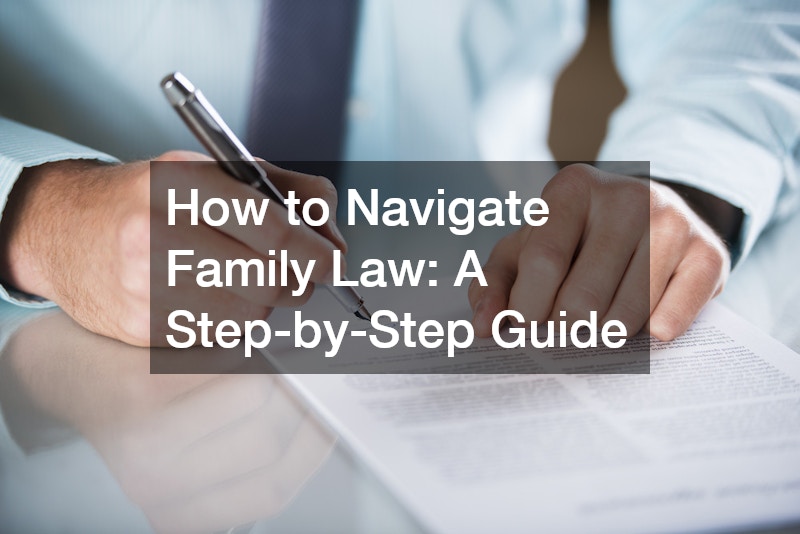Navigating the complexities of family law in Australia can be emotionally and legally challenging. Whether you’re facing separation, dealing with parenting arrangements or finalising property settlements, understanding the steps involved can ease stress and ensure your rights are protected. This guide walks you through each phase of the process under Australian family law to help you make informed decisions.
1. Understand the Scope of Family Law in Australia
Family law in Australia is primarily governed by the Family Law Act 1975 (Cth), which applies to married and de facto couples. The legislation covers a broad range of issues, including divorce, parenting arrangements, child support, spousal maintenance and property division. The law aims to prioritise the best interests of children while encouraging fair and equitable outcomes for all parties involved. It is important to note that family law applies uniformly across all states and territories, except for Western Australia, which has its own Family Court for certain matters involving de facto relationships.
2. Seek Early Legal Advice
Before making any decisions, it’s wise to consult a family lawyer. Early legal advice helps you understand your rights, responsibilities and the likely outcomes of your situation. Legal Aid services are available for those who qualify, offering cost-effective or free legal support. If both parties are open to negotiation, a lawyer can also assist with alternative dispute resolution methods such as mediation, which can reduce the costs and time associated with court proceedings.
3. Document Everything
If you are going through separation or divorce, start documenting relevant details as soon as possible. This includes financial records such as bank statements, mortgage details and superannuation information. Parenting arrangements are also important to note, including who cares for the children, their schooling and medical needs. Additionally, keep a record of communication between you and the other party. These documents will be crucial during negotiations or court proceedings, especially when establishing timelines or proving financial and parental contributions.
4. Attempt Dispute Resolution
The family law system in Australia encourages separating couples to resolve disputes outside court through Family Dispute Resolution (FDR). FDR is a form of mediation facilitated by an accredited practitioner and is a mandatory step for most parenting matters before filing an application in court, unless exceptions apply, such as family violence or urgent issues. If successful, mediation can result in a parenting plan or a binding financial agreement. These can later be formalised through consent orders, which are enforceable by law.
5. File for Divorce (If Applicable)
To file for divorce in Australia, you must be separated for at least 12 months. This period includes situations where you continue living under the same roof. Either party can apply for divorce and the process is relatively straightforward via the Federal Circuit and Family Court of Australia (FCFCOA). It is important to understand that divorce only legally ends the marriage—it does not resolve parenting or property matters. Those must be dealt with separately and preferably within 12 months of the divorce becoming final.
6. Make Parenting Arrangements
Under Australian family law, the focus of any parenting arrangement is the best interests of the child. Parents may agree informally, draft a parenting plan or formalise the agreement through consent orders. If disputes arise and Family Dispute Resolution fails or is deemed inappropriate, you may need to apply to the FCFCOA for parenting orders. The court will consider various factors such as the child’s relationship with each parent, safety and the ability of each parent to meet the child’s needs.
7. Divide Property & Assets
Property settlement refers to the division of assets and liabilities accumulated during the relationship. Australian family law uses a four-step process to determine a just and equitable division. First, all assets and liabilities are identified and valued, including real estate, vehicles, superannuation and debts. Then, the court assesses contributions made by each party, which can include financial contributions like income and asset acquisition, as well as non-financial contributions such as caring for children or managing the household. After that, the future needs of each party are evaluated, taking into account factors like age, health, income capacity and care responsibilities. Finally, the court considers what is fair and equitable in all the circumstances. Parties can reach an agreement privately or through mediation and formalise it with consent orders or a binding financial agreement.
Final Thoughts on Navigating Family Law in Australia
Understanding how to navigate family law in Australia is essential when dealing with the complexities of separation, parenting and asset division. By seeking early legal advice, prioritising dispute resolution and focusing on the well-being of children, you can achieve fair and practical outcomes. Remember that each situation is unique and while this guide offers a general roadmap, personalised legal advice is always recommended.
Family law is designed to support individuals through one of life’s most difficult transitions, so use the resources available to ensure your journey is as smooth as possible.
.

